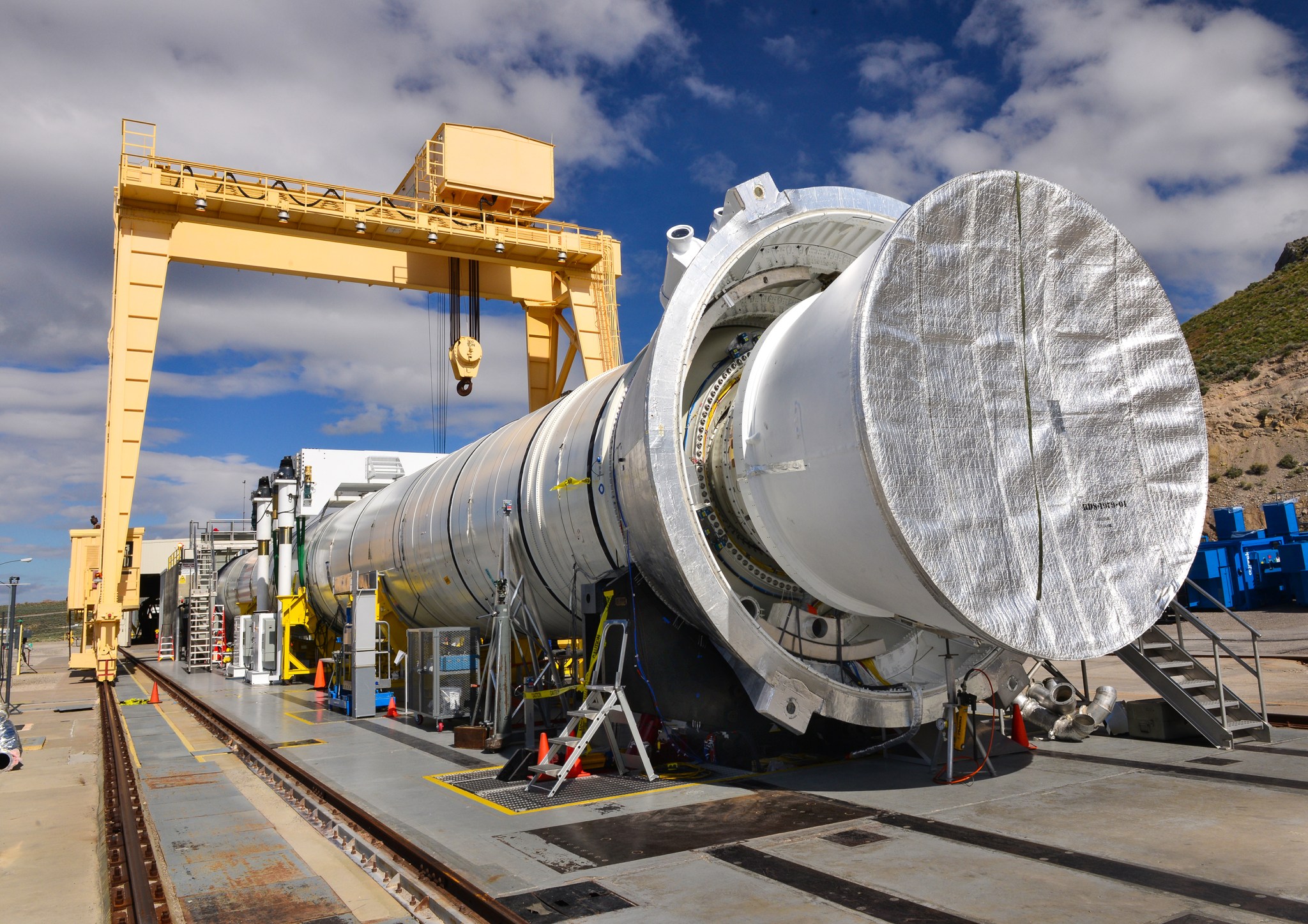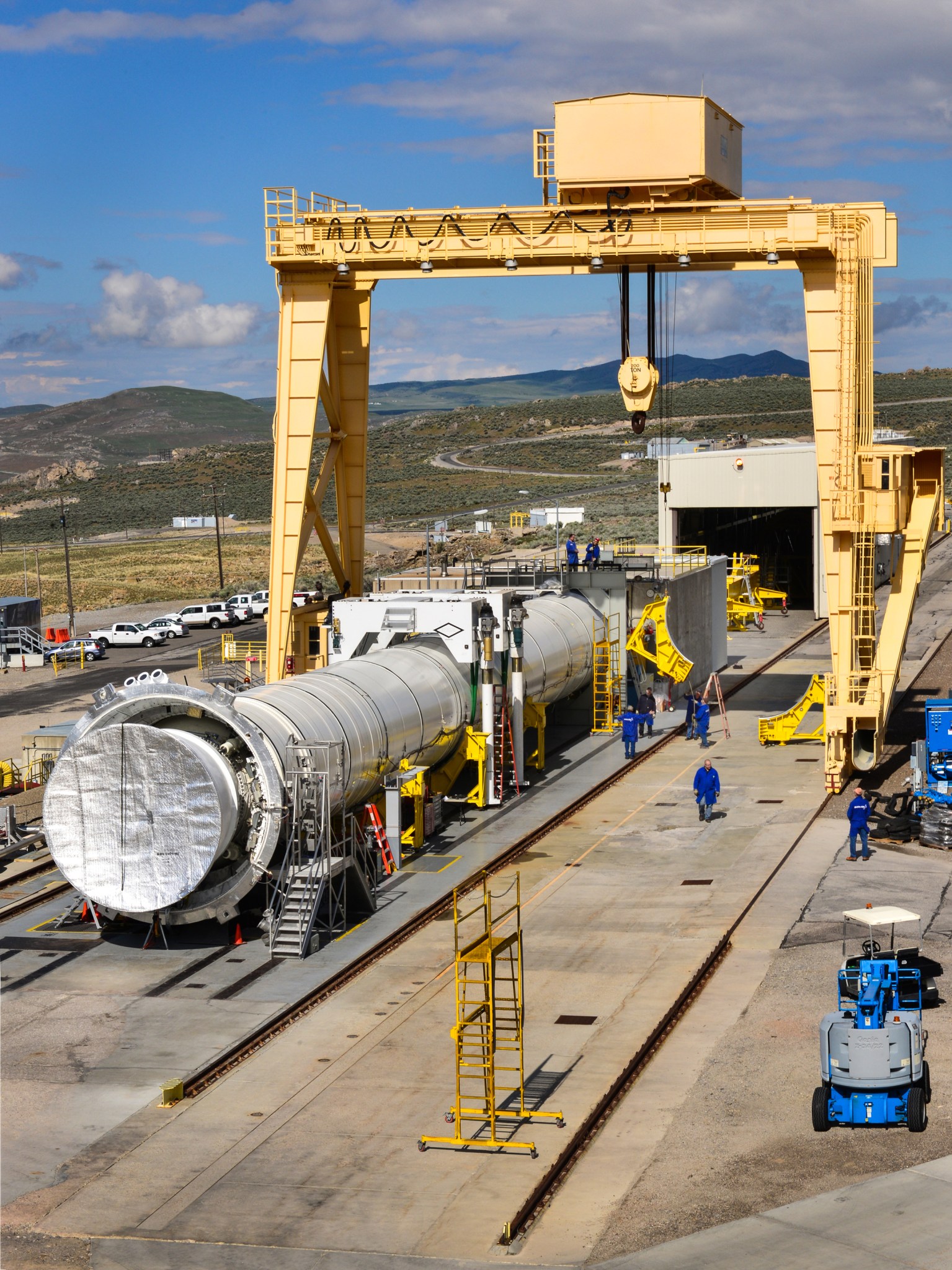
Media and social media followers are invited to watch as NASA tests the largest, most powerful booster in the world for the agency’s new deep space rocket, the Space Launch System (SLS), on June 28 at Orbital ATK Aerospace System’s test facility in Promontory, Utah. SLS and NASA’s Orion spacecraft will launch astronauts on missions to explore multiple destinations on the journey to Mars.

NASA social media followers can apply for credentials to attend the booster test firing as part of a NASA Social event. A maximum of 45 participants will be selected to attend events on June 27, which include tours of the Orbital ATK facilities and opportunities for interviews with NASA and Orbital ATK officials. Participants also will have the opportunity to view, and feel, the powerful test firing on June 28.
Social media followers can apply to attend the event at:
https://www.nasa.gov/social/qm2_social
Registration is for U.S. citizens only and closes Monday, May 23. All social media accreditation applications will be considered on a case-by-case basis. Details and rules for social media accreditation also are listed on the website.
Members of the U.S. media interested in covering the June 27 events and June 28 test can request credentials by contacting Orbital ATK’s Kay Anderson at 435-230-2787 or kay.anderson@orbitalatk.com.
This is the second two-minute, full-duration qualification test for the booster, and will provide NASA with critical data to support booster qualification for flight. It also will be the last time the booster is fired in a test environment before the first flight of SLS and Orion in 2018.
During the test, 82 qualification test objectives will be measured through more than 530 instrumentation channels on the booster at a target initial temperature of 40 degrees Fahrenheit – the colder end of its accepted propellant temperature range.
The first, full-scale booster qualification test was successfully completed in March 2015 and demonstrated acceptable performance of the booster design at 90 degrees Fahrenheit — the highest end of the booster’s accepted propellant temperature range. Testing at the thermal extremes experienced by the booster on the launch pad is important to understanding the effects of temperature on the performance of the propellant.
Two five-segment solid rocket boosters and four RS-25 main engines will power the SLS. Solid rocket boosters operate in parallel with the main engines for the first two minutes of flight, providing more than 75 percent of the thrust needed for the rocket to overcome Earth’s gravitational pull.
The SLS Block I configuration will have a minimum 70-metric-ton (77-ton) lift capability and be powered by twin boosters and four RS-25 engines. The next planned upgrade of SLS, Block 1B, would use a more powerful exploration upper stage for more ambitious missions with a 105-metric-ton (115-ton) lift capacity. Block 2 will add a pair of more powerful boosters to provide a 130-metric-ton (143-ton) lift capacity. In each configuration, SLS will continue to use the same core stage and four RS-25 engines.
For more information about SLS, visit:
https://www.nasa.gov/sls
-end-
Kathryn Hambleton
Headquarters, Washington
202-358-1100
kathryn.hambleton@nasa.gov
Kim Henry
Marshall Space Flight Center, Huntsville, Ala.
256-544-0034
kimberly.h.henry@nasa.gov



























